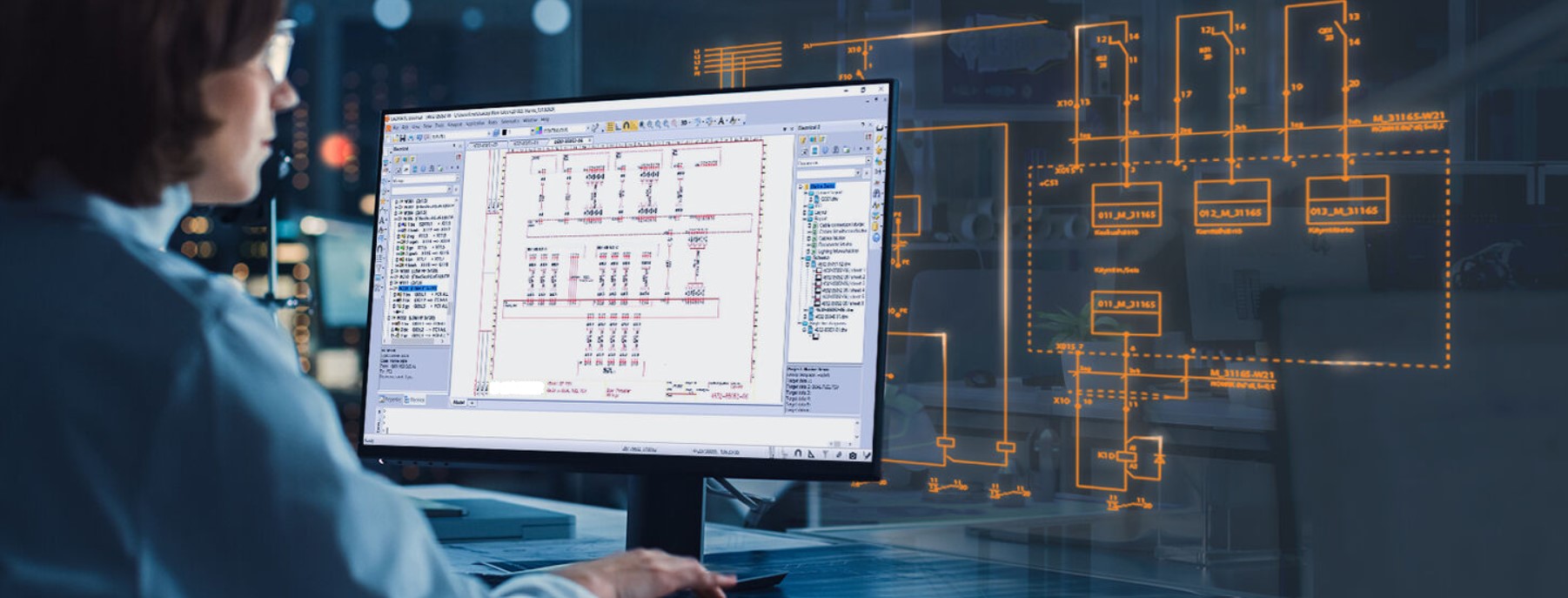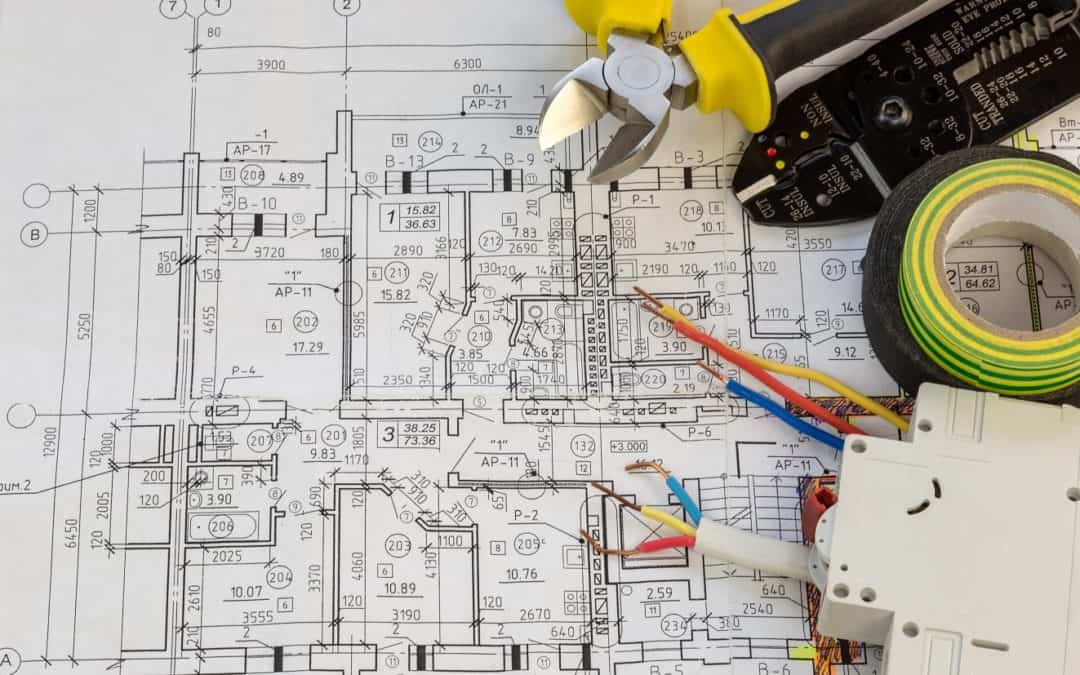Improving Industrial Electrical Design for High-Demand Operations
Improving Industrial Electrical Design for High-Demand Operations
Blog Article
Ingenious Electric Design Solutions for Modern Infrastructure
The advancement of contemporary facilities demands innovative electrical design solutions that not just enhance functional effectiveness however also address sustainability challenges. As city settings expand significantly complex, including modern technologies such as smart grids and eco-friendly energy resources ends up being extremely important. These innovations not just promise to optimize power usage yet likewise foster resilience versus future demands. The landscape of electrical design is undertaking fast change, triggering a closer evaluation of arising fads and their implications for long-term infrastructure stability. What might the future hold for those that accept these ingenious strategies?
Significance of Ingenious Electric Design
Cutting-edge electric design plays a critical role in modern framework, influencing not only efficiency yet additionally sustainability. As cities progress and the need for power rises, the demand for innovative electric systems comes to be extremely important. These systems must not only satisfy present needs yet likewise anticipate future growth and technical innovations.
A well-executed electric design can significantly reduce power intake, thereby decreasing functional expenses and reducing ecological impact. By incorporating renewable resource sources, such as solar panels and wind generators, ingenious styles can improve energy independence and durability. Clever grid technologies allow for real-time surveillance and administration of power circulation, maximizing performance and lowering waste.
Safety and security is an additional crucial facet of electric design. Executing strenuous requirements and advanced innovations can mitigate threats related to electric failings, making certain a secure atmosphere for companies and homeowners alike. Furthermore, cutting-edge styles help with versatility, permitting facilities to incorporate emerging modern technologies effortlessly.
Key Trends in Electrical Design
As the landscape of electric design remains to progress, numerous essential trends are shaping the future of the industry. One significant fad is the combination of smart innovation right into electric systems. The proliferation of the Internet of Things (IoT) has actually enabled real-time tracking and control of electric devices, improving effectiveness and facilitating predictive maintenance.
Another pattern is the expanding focus on modular design. This technique enables versatile and scalable services, enabling framework to adapt to changing needs without considerable renovations. Furthermore, using advanced simulation tools and Structure Information Modeling (BIM) is coming to be progressively common, streamlining the design procedure and boosting partnership amongst stakeholders.
Moreover, improvements in products scientific research are leading to the growth of lighter, more resilient, and energy-efficient components. This development is specifically important for high-performance structures and framework jobs.
Lastly, there is a marked shift in the direction of data-driven decision-making - electrical engineering design services. Leveraging data analytics aids developers maximize systems for efficiency and cost-effectiveness. Together, these fads represent a transformative age in electrical design, boosting capability, sustainability, and durability in contemporary infrastructure
Sustainable Energy Solutions
Sustainable energy solutions are significantly coming to be an essential emphasis in electrical design, mirroring a wider commitment to environmental obligation and source effectiveness. These options intend to decrease environmental influence while enhancing power usage in various infrastructures, from residential buildings to huge commercial facilities.
Among the leading methods entails the assimilation of renewable energy sources, such as photovoltaic panels and wind generators, right into electric systems. This not just lowers dependency on fossil fuels however also enhances power strength. Furthermore, cutting-edge power storage systems, such as sophisticated batteries, enable effective administration and distribution of energy, making certain that excess power created throughout height production can be used during high demand durations.
In addition, energy-efficient design methods are being taken on to boost overall system performance. This consists of using energy-efficient lights, HVAC systems, and clever important link structure innovations that monitor and adapt energy use based on tenancy and ecological problems.
Smart Grid Technologies
The application of sustainable energy options naturally brings about the expedition of clever grid modern technologies, which play a crucial function in my explanation modernizing electrical systems. Smart grids utilize advanced interaction innovations and data analytics to enhance the integrity, effectiveness, and sustainability of electrical energy circulation. By incorporating digital innovation with standard grid infrastructure, these systems promote real-time surveillance, automated control, and boosted decision-making capabilities.
Among the essential attributes of smart grids is their capacity to accommodate renewable power sources, such as solar and wind power. This flexibility not only reduces dependence on fossil fuels yet likewise permits a more decentralized energy production design. Wise grids enable demand feedback programs, where consumers can readjust their energy usage based on real-time rates, thereby advertising power preservation and reducing peak load needs.
Additionally, wise grid modern technologies improve grid durability by enabling quicker recognition and resolution of blackouts, eventually decreasing downtime. With predictive upkeep and analytics, utilities can improve and enhance procedures solution shipment. As cities and neighborhoods remain to develop, wise grid technologies are crucial for constructing a sustainable and effective electrical facilities that meets the needs of contemporary society.

Future-Proofing Framework
To guarantee lasting stability and versatility, future-proofing infrastructure is vital in the quickly advancing landscape of electrical design solutions. As modern technology advances and power demands shift, it is crucial that electric systems are developed with adaptability in mind. This involves incorporating scalable remedies that can fit future upgrades without necessitating comprehensive overhauls.

Furthermore, sustainability must be a foundation of future-proofed designs. Using renewable energy sources, such as solar and wind, and optimizing continue reading this energy efficiency minimize dependence on nonrenewable fuel sources, straightening with international efforts to deal with environment adjustment.
Verdict
Finally, ingenious electrical design solutions play a pivotal role fit modern facilities. By prioritizing sustainability, effectiveness, and flexibility, these solutions address the progressing needs of power systems. The assimilation of clever grid innovations and sustainable power remedies improves strength and lowers functional costs. Future-proofing framework with innovative simulation devices and modular techniques makes sure that electric systems stay responsive to transforming demands, ultimately adding to a more energy-independent and lasting future.
A well-executed electric design can substantially reduce energy usage, consequently lowering operational prices and decreasing environmental effect. By including eco-friendly energy sources, such as solar panels and wind turbines, innovative layouts can improve power self-reliance and resilience. Furthermore, innovative power storage systems, such as advanced batteries, allow effective administration and distribution of power, making sure that excess power produced during optimal manufacturing can be used during high demand durations.
Smart grids allow need response programs, where consumers can change their power use based on real-time prices, consequently promoting power preservation and reducing peak tons demands. (industrial electrical design)
As modern technology breakthroughs and power needs shift, it is critical that electric systems are created with adaptability in mind.
Report this page